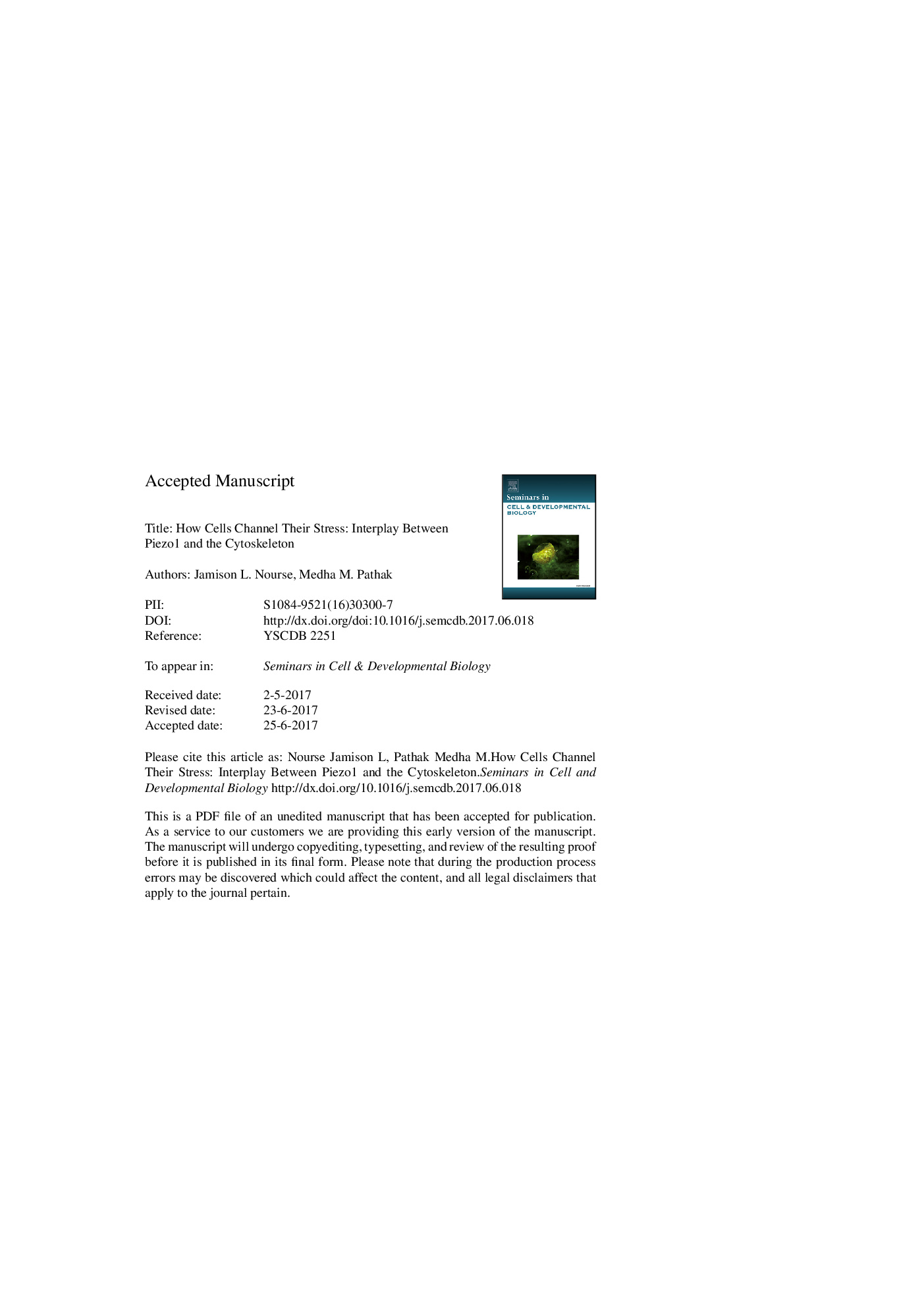| Article ID | Journal | Published Year | Pages | File Type |
|---|---|---|---|---|
| 8479981 | Seminars in Cell & Developmental Biology | 2017 | 24 Pages |
Abstract
Cells constantly encounter mechanical stimuli in their environment, such as dynamic forces and mechanical features of the extracellular matrix. These mechanical cues are transduced into biochemical signals, and integrated with genetic and chemical signals to modulate diverse physiological processes. Cells also actively generate forces to internally transport cargo, to explore the physical properties of their environment and to spatially position themselves and other cells during development. Mechanical forces are therefore central to development, homeostasis, and repair. Several molecular and biophysical strategies are utilized by cells for detecting and generating mechanical forces. Here we discuss an important class of molecules involved in sensing and transducing mechanical forces - mechanically-activated ion channels. We focus primarily on the Piezo1 ion channel, and examine its relationship with the cellular cytoskeleton.
Keywords
ECMAFMTraction forcesLINCTIRFMPiezo1ERKeNOSFAZChoChinese Hamster Ovaryendothelial nitric oxide synthaseCalcium signalinglinker of nucleoskeleton and cytoskeletonExtracellular matrixMechanotransductionTotal internal reflection fluorescence microscopyatomic force microscopyCytoskeletonFocal adhesionsextracellular signal-regulated kinases
Related Topics
Life Sciences
Biochemistry, Genetics and Molecular Biology
Cell Biology
Authors
Jamison L. Nourse, Medha M. Pathak,
